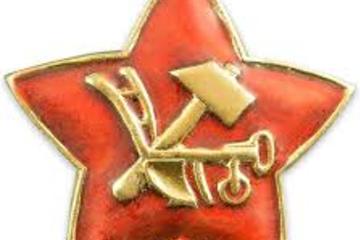We found 214 results that contain "p- image"
Posted on: #iteachmsu

DISCIPLINARY CONTENT
Collaborative Education
Reflection
Prompt
Were you successful in providing opportunities for students? Why or why not? What improvements or revisions could be included?
How did you provide instruction and formative feedback on these habits, skills, and dispositions to students along the way?
If you were to embed habits, skills, and/or dispositions in another performance, what would you do differently from this time?
Prompt
Were you successful in providing opportunities for students? Why or why not? What improvements or revisions could be included?
How did you provide instruction and formative feedback on these habits, skills, and dispositions to students along the way?
If you were to embed habits, skills, and/or dispositions in another performance, what would you do differently from this time?
Posted by:
Chathuri Hewapathirana

Posted on: #iteachmsu


Collaborative Education
Reflection
Prompt
Were you successful in providing opportunities f...
Prompt
Were you successful in providing opportunities f...
Posted by:
DISCIPLINARY CONTENT
Friday, Jan 8, 2021
Posted on: #iteachmsu

By Shravya: Article with Links
https://www.youtube.com/watch?v=xHBhFKBLhWshttps://mays.tamu.edu/department-of-information-and-operations-management/management-information-systems/#:~:text=Management%20Information%20Systems%20(MIS)%20is,emphasis%20on%20service%20through%20technology.
Authored by:
Vijaya
Posted on: #iteachmsu

By Shravya: Article with Links
https://www.youtube.com/watch?v=xHBhFKBLhWshttps://mays.tamu.edu/de...
Authored by:
Monday, Jul 28, 2025
Posted on: #iteachmsu

PEDAGOGICAL DESIGN
technology Development
https://www.youtube.com/watch?v=vr8pNgjI9Ig
new technology
In technology development significant advances are as often the result of a series of evolutionary steps as they are of breakthroughs. This is illustrated by the examples of the steam engine and the computer. Breakthroughs, such as the transistor, are relatively rare, and are often the result of the introduction of new knowledge coming from a quite different area. Technology development is often difficult to predict because of its complexity; practical considerations may far outweigh apparent scientific advantages, and cultural factors enter in at many levels. In a large technological organization problems exist in bringing scientific knowledge to bear on development, but much can be done to obviate these difficulties.
new technology
In technology development significant advances are as often the result of a series of evolutionary steps as they are of breakthroughs. This is illustrated by the examples of the steam engine and the computer. Breakthroughs, such as the transistor, are relatively rare, and are often the result of the introduction of new knowledge coming from a quite different area. Technology development is often difficult to predict because of its complexity; practical considerations may far outweigh apparent scientific advantages, and cultural factors enter in at many levels. In a large technological organization problems exist in bringing scientific knowledge to bear on development, but much can be done to obviate these difficulties.
Authored by:
Chathuri

Posted on: #iteachmsu


technology Development
https://www.youtube.com/watch?v=vr8pNgjI9Ig
new technology&n...
new technology&n...
Authored by:
PEDAGOGICAL DESIGN
Tuesday, Oct 15, 2019
Posted on: #iteachmsu

The benefits and challenges of Virtual Working uncovered
REF: https://www.servicefutures.com/benefits-challenges-virtual-working-uncovered
Virtual Working is on the rise and towards 2020 even more employees will demand flexibility in where and how they work. But which benefits and challenges does this bring to the workplace?
The ISS 2020 Vision: New Ways of Working – the workplace of the future respondents believe that virtual working will have the single greatest influence on office design, and the way we manage workplaces.
Unlike anything else, virtual working allows companies to offer their employees more flexibility and give them more control over their daily schedule. On the flip side of the coin research shows that managers are ill-prepared to manage virtual workers and struggle with coordinating remote employees.
So, is virtual working the right way to go for your business? We’ve listed the most important benefits and challenges associated with Virtual Working in our infographic below.
Virtual Working is on the rise and towards 2020 even more employees will demand flexibility in where and how they work. But which benefits and challenges does this bring to the workplace?
The ISS 2020 Vision: New Ways of Working – the workplace of the future respondents believe that virtual working will have the single greatest influence on office design, and the way we manage workplaces.
Unlike anything else, virtual working allows companies to offer their employees more flexibility and give them more control over their daily schedule. On the flip side of the coin research shows that managers are ill-prepared to manage virtual workers and struggle with coordinating remote employees.
So, is virtual working the right way to go for your business? We’ve listed the most important benefits and challenges associated with Virtual Working in our infographic below.
Posted by:
Chathuri Super admin..

Posted on: #iteachmsu

DISCIPLINARY CONTENT
ADHD Misconceptions
https://www.sciencedaily.com/releases/2016/10/161013103134.htm
Attention-deficit hyperactivity disorder (ADHD) is a very common condition diagnosed mainly in children.
According to the Centers for Disease Control and Prevention (CDC), 6.4 million children between four and 17 years of age have been diagnosed with ADHD as of 2011.
This primer is designed to help you understand ADHD at a deeper level and combat misconceptions.
Fact: An ADHD diagnosis requires observations of numerous symptoms in multiple settings and evidence of significant impairment.
Children are inherently energetic, sometimes even rowdy. If unruly behavior is the only symptom, then it’s difficult for a professional to say that their problem is truly a mental illness.
“ADHD is a real mental disorder. There are a myriad of reasons why children are inattentive, such as anxiety or inadequate sleep, but a child with attention-deficit disorder (ADD) or ADHD does have a condition. Diagnosis will require observations of numerous symptoms in multiple settings and evidence of significant impairment.” - Joshua Cabrera, MD, clinical psychiatrist and assistant professor at the Texas A&M College of Medicine.
The main symptoms of ADHD are inattention, hyperactivity and impulsivity.
These can manifest in different ways: persistent fidgeting, being easily distracted or forgetful and difficulty waiting for a turn.
Attention-deficit hyperactivity disorder (ADHD) is a very common condition diagnosed mainly in children.
According to the Centers for Disease Control and Prevention (CDC), 6.4 million children between four and 17 years of age have been diagnosed with ADHD as of 2011.
This primer is designed to help you understand ADHD at a deeper level and combat misconceptions.
Fact: An ADHD diagnosis requires observations of numerous symptoms in multiple settings and evidence of significant impairment.
Children are inherently energetic, sometimes even rowdy. If unruly behavior is the only symptom, then it’s difficult for a professional to say that their problem is truly a mental illness.
“ADHD is a real mental disorder. There are a myriad of reasons why children are inattentive, such as anxiety or inadequate sleep, but a child with attention-deficit disorder (ADD) or ADHD does have a condition. Diagnosis will require observations of numerous symptoms in multiple settings and evidence of significant impairment.” - Joshua Cabrera, MD, clinical psychiatrist and assistant professor at the Texas A&M College of Medicine.
The main symptoms of ADHD are inattention, hyperactivity and impulsivity.
These can manifest in different ways: persistent fidgeting, being easily distracted or forgetful and difficulty waiting for a turn.
Authored by:
Viju

Posted on: #iteachmsu


ADHD Misconceptions
https://www.sciencedaily.com/releases/2016/10/161013103134.htm
Att...
Att...
Authored by:
DISCIPLINARY CONTENT
Monday, Sep 25, 2023
Posted on: #iteachmsu

What is Attention Deficit Hyperactivity Disorder?
Classroom Interventions for Attention Deficit/ Hyperactivity Disorder Considerations Packet
Iteach MSU : Get started
ADHD is one of the most commonly diagnosed conditions of children (Centers for DiseaseControl and Prevention, 2015).
In a 2016 Centers for Disease Control and Prevention study, scientists found that 6.1 million children aged 2-17 years living in the U.S. had been diagnosed with attention-deficit/hyperactivity disorder (ADHD), which is similar to previous estimates.
Ages 2-5: Approximately 388,000 children
Ages 6-11: Approximately 2.4 million children
Ages 12-17: Approximately 3.3 million children
Iteach MSU : Get started
ADHD is one of the most commonly diagnosed conditions of children (Centers for DiseaseControl and Prevention, 2015).
In a 2016 Centers for Disease Control and Prevention study, scientists found that 6.1 million children aged 2-17 years living in the U.S. had been diagnosed with attention-deficit/hyperactivity disorder (ADHD), which is similar to previous estimates.
Ages 2-5: Approximately 388,000 children
Ages 6-11: Approximately 2.4 million children
Ages 12-17: Approximately 3.3 million children
Authored by:
Primer text from The College of William & Mary
Posted on: #iteachmsu

ASSESSING LEARNING
An Effective Management Information System
Effective Management Information System:
Essential characteristics of an effective management information system are 1. MIS is management-oriented 2. MIS is developed under the direction of management 3. MIS is an integrated system 4. common data flow 5. MIS is based upon the future needs of the business 6. MIS is composed of sub-systems 7. MIS requires flexibility 8. distributed data processing and 9. MIS is mostly computerized.
Management Information System is established in an organization to provide relevant information to the managers to operate effectively and efficiently.
1. MIS is management-oriented:
The design of MIS starts with an appraisal of the information needs of the management. The system is usually designed from top to bottom. However, this does not mean that MIS fulfills the information needs of top management only.
It only implies that the information needs of the top management will serve as a basis for the assessment of the information needs of lower-level managers. In every case, the system should be designed to cater to the information needs of all levels of management.
2. MIS is developed under the direction of management:
Because of the management orientation of MIS, it is imperative that the management of an organization actively directs the development and establishment of the MIS in an organization.
It is rare to find an MIS where the manager himself, or a high-level representative of his department, is not spending a good deal of time in the system design.
Essential characteristics of an effective management information system are 1. MIS is management-oriented 2. MIS is developed under the direction of management 3. MIS is an integrated system 4. common data flow 5. MIS is based upon the future needs of the business 6. MIS is composed of sub-systems 7. MIS requires flexibility 8. distributed data processing and 9. MIS is mostly computerized.
Management Information System is established in an organization to provide relevant information to the managers to operate effectively and efficiently.
1. MIS is management-oriented:
The design of MIS starts with an appraisal of the information needs of the management. The system is usually designed from top to bottom. However, this does not mean that MIS fulfills the information needs of top management only.
It only implies that the information needs of the top management will serve as a basis for the assessment of the information needs of lower-level managers. In every case, the system should be designed to cater to the information needs of all levels of management.
2. MIS is developed under the direction of management:
Because of the management orientation of MIS, it is imperative that the management of an organization actively directs the development and establishment of the MIS in an organization.
It is rare to find an MIS where the manager himself, or a high-level representative of his department, is not spending a good deal of time in the system design.
Authored by:
Rupali
Posted on: #iteachmsu

An Effective Management Information System
Effective Management Information System:
Essential characteristics ...
Essential characteristics ...
Authored by:
ASSESSING LEARNING
Tuesday, Jan 5, 2021
Posted on: #iteachmsu

PEDAGOGICAL DESIGN
Evolution of Organizational Behavior
REF: https://courses.lumenlearning.com/wm-organizationalbehavior/chapter/what-is-organizational-behavior
In a nutshell, organizational behavior is the study of how human behavior affects an organization. Organizational behavior aims to learn how an organization operates through the behaviors of its members. Instead of taking a strictly numerical approach to determine an organization’s operations, it takes a more psychological approach. By understanding people, you can better understand an organization
The academic study of organizational behavior can be dated back to Taylor’s scientific theory . However, certain components of organizational behavior can date back even further. In this section we will discuss how organizational behavior developed into a field of its own.
Looking back thousands of years we can find components of organizational behavior. Famous philosophers like Plato and Aristotle discussed key components of today’s organizations including the importance of leadership and clear communication. While these seem like very basic and broad concepts today, at the time they were innovative ideas and helped to lay the foundation for organizational behavior.
If organizational behavior were a simple topic, this course would be short and sweet. We could simply say that organizational behavior is how people and groups act within an organization. But it’s not so simple!
When organizational behavior grew into an academic study with the rise of the Industrial Revolution, it began to complicate what could appear to be simple topics. People began asking a lot of questions and started critiquing how organizations operated. Like many academic ventures, people began to deep dive into how behavior plays a role in organizations and why changes in behavior alter the way organizations operate. Along the way, organizational behavior has grown to incorporate components of management, psychology, leadership, personality traits, motivation, etc.
Organizational behavior has grown into its own niche within a wide variety of other genres. This is exciting because it allows us to really investigate each and every aspect of behavior within an organization! Today, organizational behavior is recognized as an essential component of an organization. Scholars and businesses alike recognize its importance and continue to help it adapt to current issues and new findings.
In a nutshell, organizational behavior is the study of how human behavior affects an organization. Organizational behavior aims to learn how an organization operates through the behaviors of its members. Instead of taking a strictly numerical approach to determine an organization’s operations, it takes a more psychological approach. By understanding people, you can better understand an organization
The academic study of organizational behavior can be dated back to Taylor’s scientific theory . However, certain components of organizational behavior can date back even further. In this section we will discuss how organizational behavior developed into a field of its own.
Looking back thousands of years we can find components of organizational behavior. Famous philosophers like Plato and Aristotle discussed key components of today’s organizations including the importance of leadership and clear communication. While these seem like very basic and broad concepts today, at the time they were innovative ideas and helped to lay the foundation for organizational behavior.
If organizational behavior were a simple topic, this course would be short and sweet. We could simply say that organizational behavior is how people and groups act within an organization. But it’s not so simple!
When organizational behavior grew into an academic study with the rise of the Industrial Revolution, it began to complicate what could appear to be simple topics. People began asking a lot of questions and started critiquing how organizations operated. Like many academic ventures, people began to deep dive into how behavior plays a role in organizations and why changes in behavior alter the way organizations operate. Along the way, organizational behavior has grown to incorporate components of management, psychology, leadership, personality traits, motivation, etc.
Organizational behavior has grown into its own niche within a wide variety of other genres. This is exciting because it allows us to really investigate each and every aspect of behavior within an organization! Today, organizational behavior is recognized as an essential component of an organization. Scholars and businesses alike recognize its importance and continue to help it adapt to current issues and new findings.
Authored by:
Sands

Posted on: #iteachmsu


Evolution of Organizational Behavior
REF: https://courses.lumenlearning.com/wm-organizationalbehavior/ch...
Authored by:
PEDAGOGICAL DESIGN
Tuesday, Dec 29, 2020



